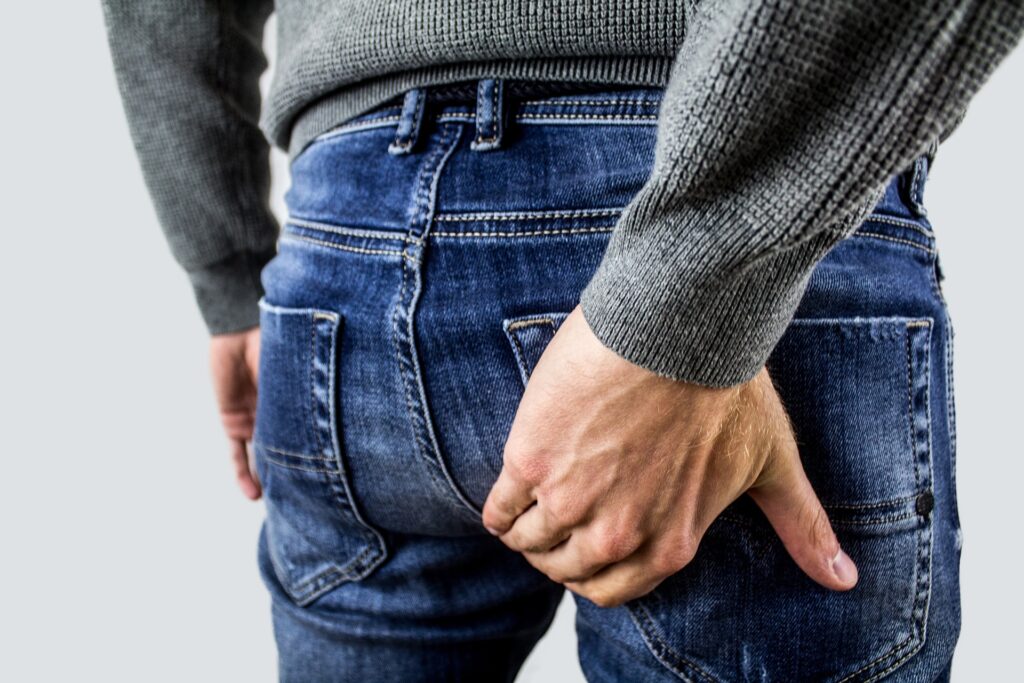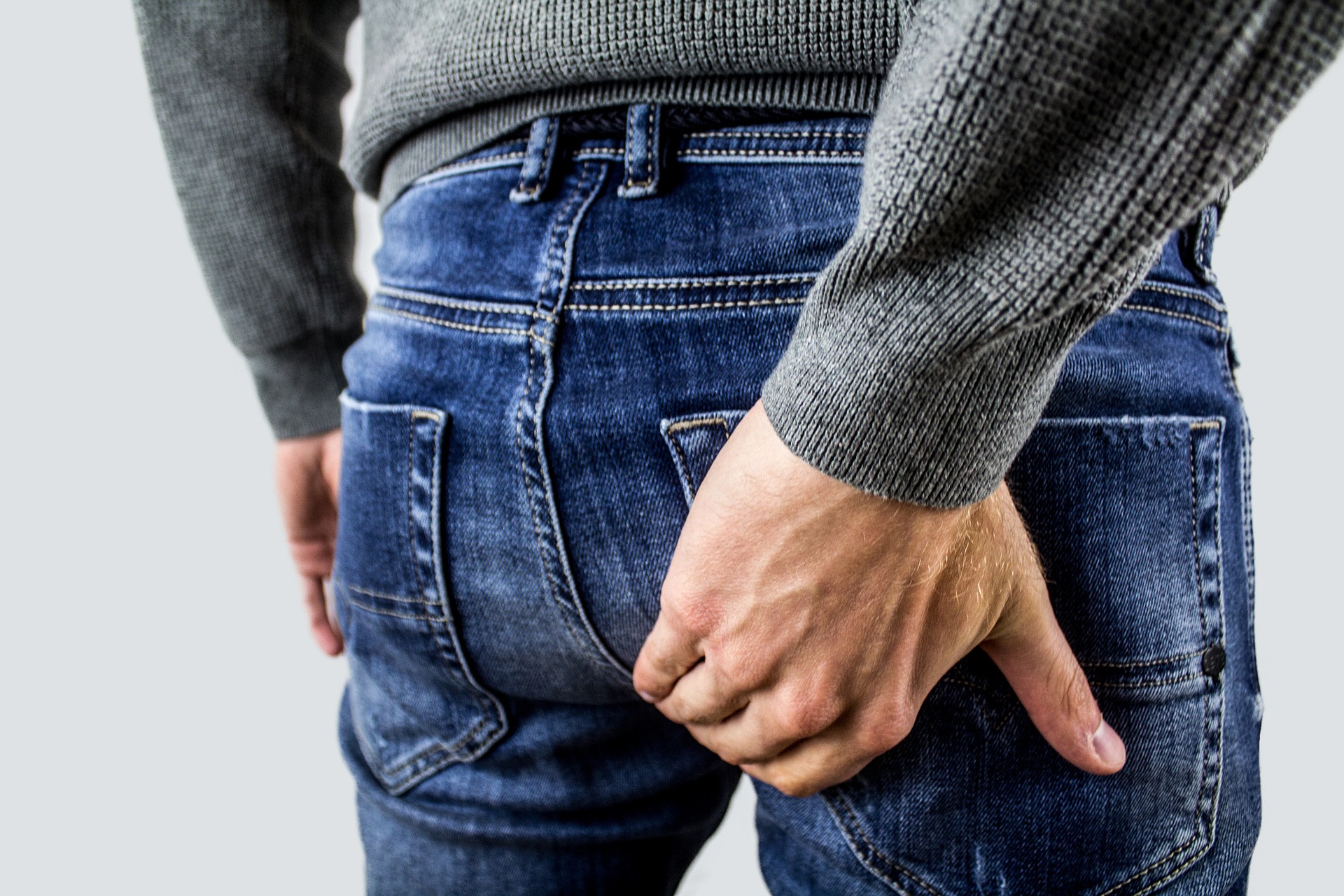They are also known as piles. Three anal cushions in the anal canal help to provide an efficient gas and fluid-proof seal to the anal canal. Sometimes these cushions can get enlarged and come out of the anal canal. These abnormal enlargements can get damaged after coming out as well. Enlarged anal cushions are called hemorrhoids.
Some believe that hemorrhoids contain major blood vessels which is inaccurate. They contain normal small anal vessels and they are mainly prominent on the surface area of the hemorrhoids.
When you have piles for a considerably long period the prolapse can stretch the skin around the anus which can cause skin tags. Because of that sometimes hemorrhoids occur with skin tags.

Etiology of Hemorrhoids
- Lack of fiber intake in your diet can lead to a small amount of stools. This small amount can cause strenuous straining during defecation which can lead to the formation of hemorrhoids.
- Most of the patients are found to be doing strenuous straining for a considerably long period.
Risk Factors
- Obesity
- Old age can result in weakness of supporting tissue in the body which can predispose you to get piles.
- Pregnancy
- Lifting heavy weights occasionally
- Long term cough
- A repeated episode of vomiting
- Engaging in occupations that require sitting in the same position for a long time.
- Having a blood relative who has had piles before.
- Anal intercourse
Clinical Manifestations
- Normally if the hemorrhoid is not compliant it is not painful.
- You can feel and palpate a lump in your anal area when you are cleaning your perianal area after passing stools. These lumps can sometimes return to the rectum spontaneously or need to be pushed back in.
- Bleeding from the anal canal is the main feature of hemorrhoids. Normally bleeding occurs once you have finished passing stools. The blood is in bright red as this is fresh blood coming from the hemorrhoids. The amount of blood can be a small amount or a large amount. If it is a small amount it can look like streaks on stools or can be noted on toilet paper. If the bleeding is a large amount blood can splash into the toilet pan and even cause anemic symptoms.
- Discomfort, redness, swelling, and scratching can occur in the skin area around the anal opening.
- Wetness can be noted in the perianal area due to mucosal discharge that occurs from the piles.
Classifications of Hemorrhoids
There are three degrees of piles.
- First-degree – are the piles that do not come out of the anal canal but causes bleeding after defecation.
- Second-degree – piles come out of the anal canal but they go in spontaneously as well.
- Third-degree – piles also come out during defecation, but they need to be pushed back in manually as they don’t go in spontaneously like the previous type.
Complications
- A blood clot can be formed in the pile which can result in severe pain, swelling, and inflammation.
- Cutting off the blood supply to hemorrhoids can cause strangulated and severely painful piles.
- Long-term blood loss can cause anemia which increases fatiguability and lethargy due to a lack of hemoglobin in the blood which carries oxygen.
Diagnosis of Hemorrhoids
Diagnosis is confirmed by examining the anal canal through a digital examination in which the doctor inserts the finger into the anal canal and feels for piles. This digital examination is followed by a proctoscopy examination.
Management of Hemorrhoids
Lifestyle Modification
These steps can prevent the formation of piles as well as reduce symptoms.
- Increased fiber intake through diet by including foods rich with fiber such as fruits, vegetables, wholegrain rice, pulses, beans, seeds, nuts, and oats. These foods can increase the amount of stools and make it easier to pass stools.
- Drinking more water.
- Avoiding alcohol and caffeine intake.
- Avoid medications such as some painkillers which can cause constipation.
- Not going to the toilet when you get the urge and delaying can also cause constipation, hence it must be avoided.
- Exercise regularly.
- Maintain a good BMI and reduce obesity.
- Don’t strain and hold your breath when you are passing stools. Let them pass smoothly.
- Avoid sitting in the same position for hours
Other Treatment Methods
- Banding is done normally in which a thick elastic band is tied around the base of hemorrhoid which can cause a lack of blood supply to hemorrhoid. After like a duration of one week it can fall off.
- If the hemorrhoid is large and is situated more externally surgery is done under general anesthesia to remove them and this surgery is called a hemorroidectomy.
- Creams, ointments, and suppositories can be used to treat inflammation and pain in the perianal region.
References
- Bailey and Love’s Short Practice of Surgery- 27th Edition
- Kumar and Clerk’s Clinical Medicine -8th Edition- Parveen Kumar, Michael Clark
- Oxford Handbook of Clinical Medicine – 10th Edition
- Browse’s Introduction to the Symptoms and Signs of Surgical Disease – 4th Edition – Norman L. Browse, John Black, Kevin G. Burnand and William E.G. Thomas

